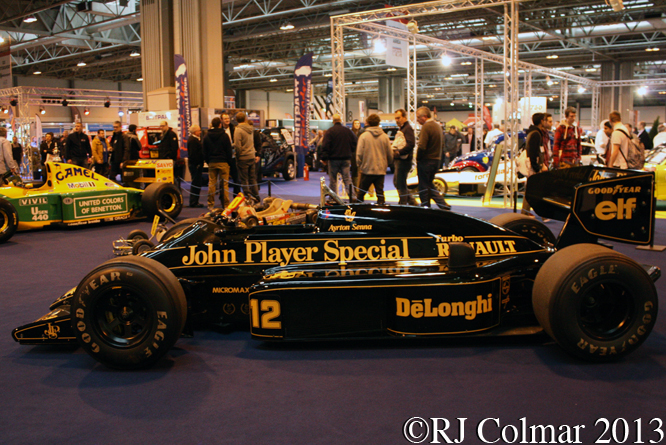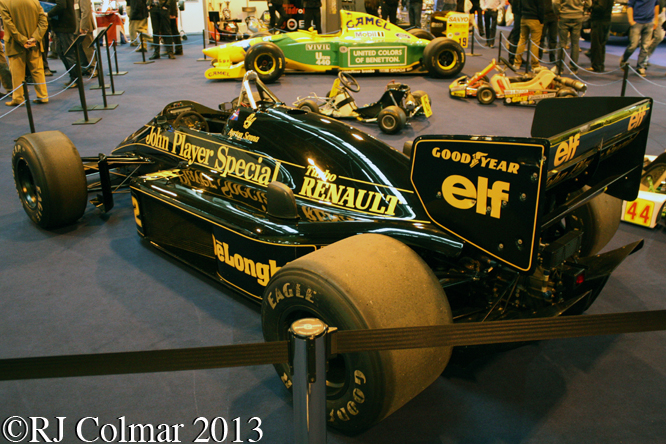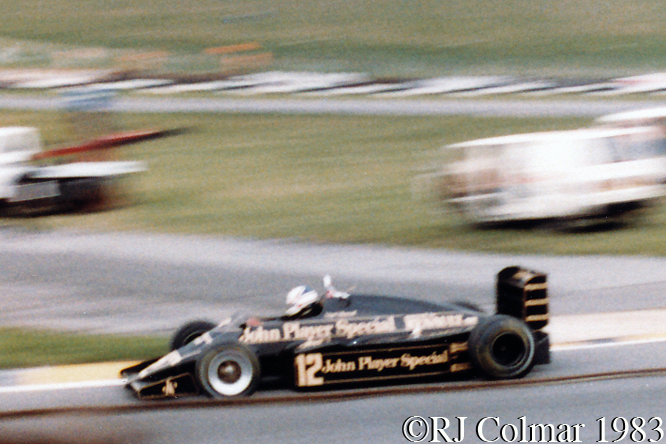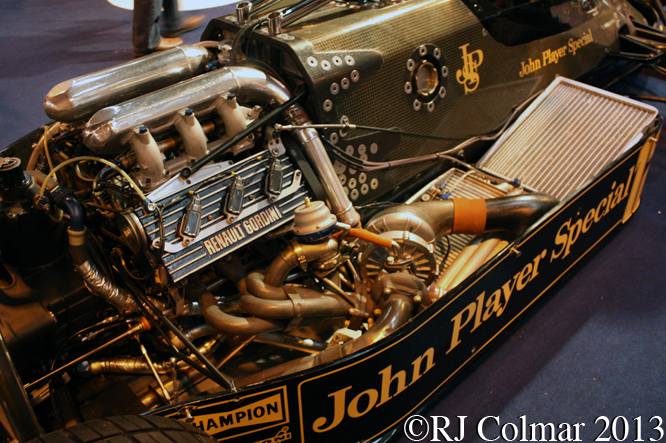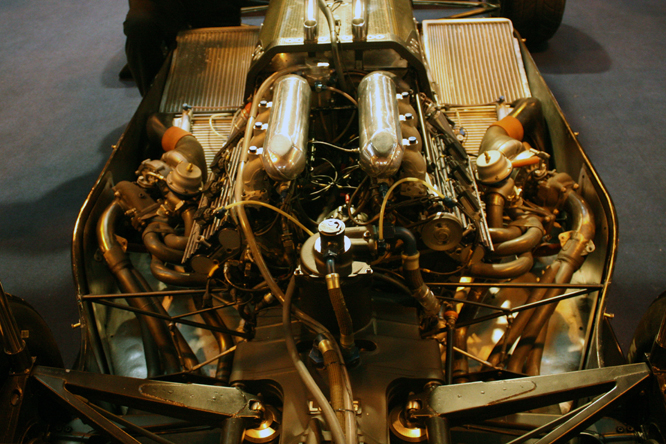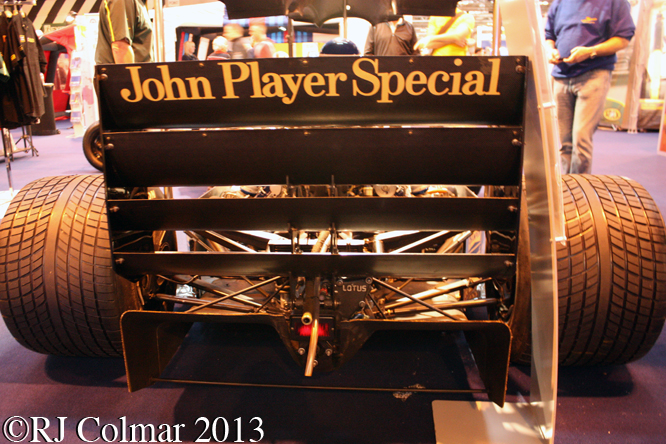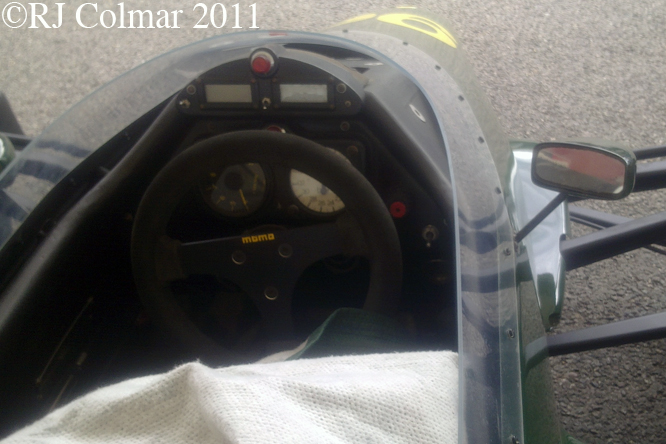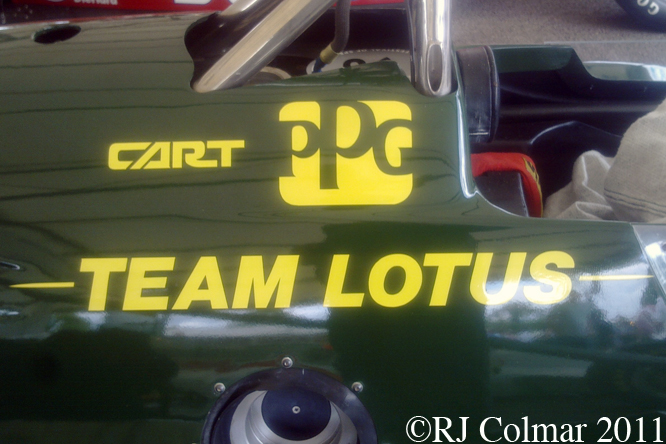At the end of 1978 Chrysler Europe was taken over by Peugeot and almost immediately rebranded the French Simca and British Hillman models as Talbot’s resurrecting a name that had last appeared in Formula One in 1951.
In 1972 MATRA, who were taken over by Simca, withdrew from Formula One to concentrate on a successful sports car program which was itself discontinued at the end of 1974 after MATRA had won three consecutive Le Mans 24 Hour races and two World sports Car Championships under the direction of Gerard Ducarouge.

Ducarouge went to work for Ligier to design a Matra powered Formula One car in 1976, the JS5 was quite successful for a new comer and the following year Jaques Laffite won the 1977 Swedish Grand Prix driving a MATRA V12 powered Ligier JS7. MATRA stopped developing their V12 in 1978 and Ligier suffered a consequent dip in their fortunes.
For 1979 and 1980 Ligier opted for the popular Cosworth DFV V8’s and immediately returned to victory lane with two surprising wins for Laffite in Argentina and Brazil with the JS11 model, but the team lost it’s direction did not present the anticipated championship challenge. In 198O Laffite won just one race but the team scored enough points to finish second in the constructors championship.
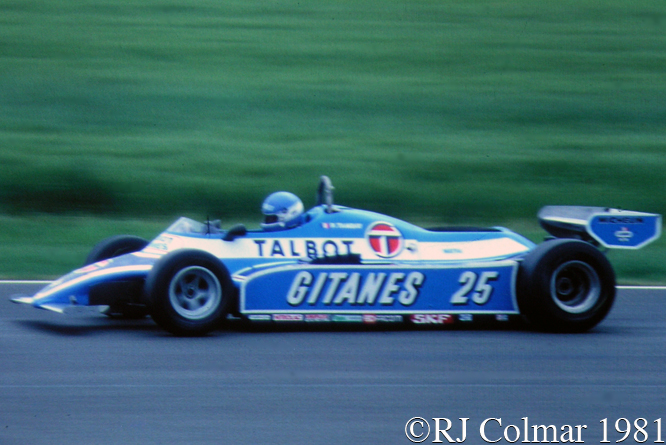
By 1981 Peugeot returned the Talbot name to Formula One by teaming up with Ligier and an updated version of the MATRA V12 was used to power the JS17’s featured today. Laffite was to be teamed up with brother in law, ex Renault refugee, Jean Pierre Jabouille who was recovering from injuries sustained when he crashed his Renault Turbo in the 1980 Canadian Grand Prix.
Jean Pierre Jarrier stood in for Jabouille for the first two races but when Jabouille returned to the cockpit he failed to qualify for two races in five attempts so he was replaced by Patrick Tambay seen at the wheel of the #25 here for the second half of the season, but crucially Jabouille remained with the team acting as an engineer. Patrick qualified for all of the remaining races but did not finish any of them.

Laffite meantime scored a couple of 2nd place finishes in Spain and Sweden along with 3 third place finishes in Monaco, Britain and Germany. Just before the French Grand Prix Gerard Ducarouge was fired by Guy Ligier.
At the Austrian Grand Prix Jabouille was instrumental in helping Laffite choose the correct tyre to suit both the Ligier and the track which resulted in the car qualifying 4th behind two turbo charged Renaults and Villenueve’s turbocharged Ferrari.

During the race after passing Villeneuve and his quick off the grid Ferrari team mate Didier Pironi, Jaques chased down the leading Renaults. Alain Prost in the lead car retired with collapsed suspension before Jacques passed the second Renault for the lead and eventual victory when René Arnoux hesitated over taking a pair of back markers.
Jacques then retired in Holland and Italy before bouncing back with a win from 10th on the grid in Canada to put him 3rd in the championship table, 6 points off the leader, with a slim chance of winning the 1981 Drivers Championship going into the Caesers Palace Grand Prix held in Las Vegas. In the event Jacques qualified just 12th behind Championship leader Carlos Reutemann who was on pole in his Williams and 2nd in standings Nelson Piquet who was 4th in his Brabham.
Reutemann inexplicably choked under the championship pressure during the race to finish 7th out of the points while Piquet salvaged a fifth place finish, one spot ahead of Jacques, enough to win the Championship. Alan Jones won the race in his Williams thereby depriving Jacques of a third place finish in the Championship, so for the third consecutive time Jacques Laffite recorded what would be his career best 4th place finish in the final championship standings.
With only the #26 scoring any points all season Ligier finished the season 4th in the Constructors Championship.
Thanks for joining me on this “In Law’s Instrumental Help” edition of “Gettin’ a li’l psycho on tyres” I hope you will join me again tomorrow. Don’t forget to come back now !







